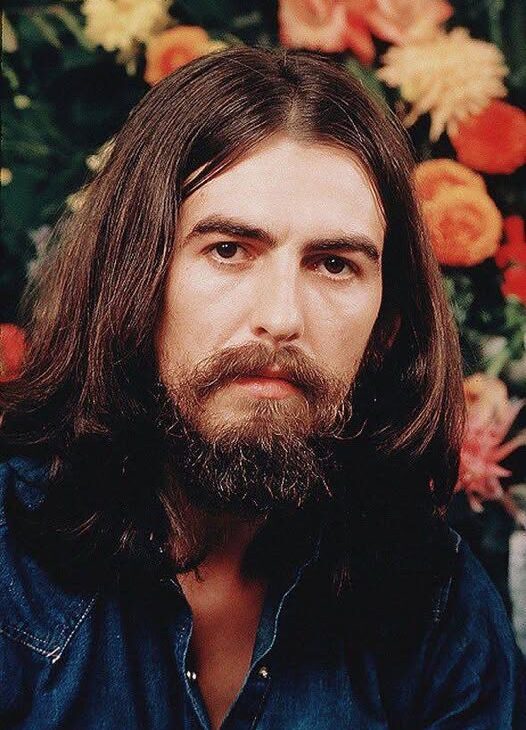George Harrison is best remembered for his introspective lyrics, spiritual journey, and quiet strength within The Beatles. But among his many hidden passions, one of the most gentle and surprising was his love for watercolor painting.
It wasn’t performance art. It wasn’t meant for gallery walls or public acclaim. George painted in solitude, away from the chaos of fame, because it brought him a sense of peace and grounding. In the 1980s and 1990s, especially during long stretches of time at his beloved Friar Park estate, George could often be found in the garden with a brush in hand—painting koi ponds, flowerbeds, weeping willows, and the soft light of passing seasons. It was a practice of presence, a quiet dialogue between nature and the soul.
His technique was untrained, deeply personal, and utterly free of pretense. He never studied under a master nor sought artistic validation. His watercolors weren’t concerned with symmetry or precision. Instead, they were expressions—fluid, spontaneous, and full of emotion. Impressionistic and often dreamlike, the paintings conveyed the same spiritual longing and inner quiet that filled his music. For George, art—like meditation—wasn’t about results. It was about presence.
Friends and family who observed him paint described it as witnessing a form of active meditation. “He wouldn’t talk much when he painted,” one close friend recalled. “He’d just settle in and let the colors take him somewhere else. You could tell he wasn’t trying to make something *look* beautiful. He was just trying to *feel* something true.” This wasn’t surprising from the Beatle who was always more interested in transcendence than attention, more drawn to what lies beneath than what dazzles on the surface.
George once said that painting was a way to “see silence.” That quiet, arresting line says everything. It encapsulates a man who had spent so much of his life immersed in sound, in music, in the mania of Beatlemania, and who eventually found solace in stillness. He didn’t need applause to feel fulfilled. He needed space. He needed silence. And he painted to touch it.
While George never formally released or marketed his art, a few of his watercolors have surfaced—often shown in intimate retrospectives alongside his handwritten lyrics, forming a soft echo between the visual and the lyrical. A blurred tree in watercolor beside the words to “Within You Without You.” A golden koi pond beneath a verse about letting go. These glimpses reveal the core of George’s artistry: layered, reflective, patient, and deeply searching.
For fans who have always felt that George was the soul of The Beatles, his private devotion to watercolor only affirms what they already knew. That he wasn’t just a brilliant guitarist or a spiritual seeker. He was a quiet artist, always looking for meaning in the spaces between sound and shade. His watercolors, like his music, are whispers of a man forever in conversation with something greater than himself—something still, serene, and endlessly beautiful.










